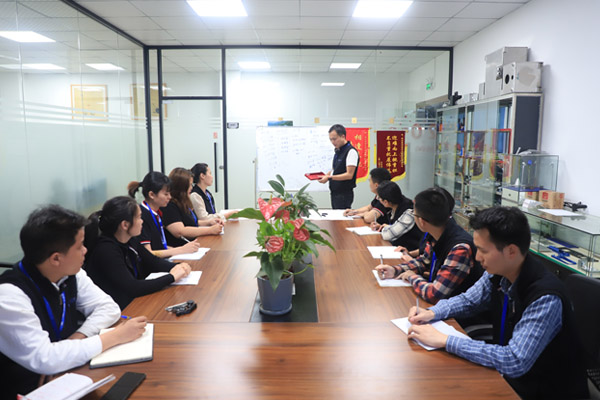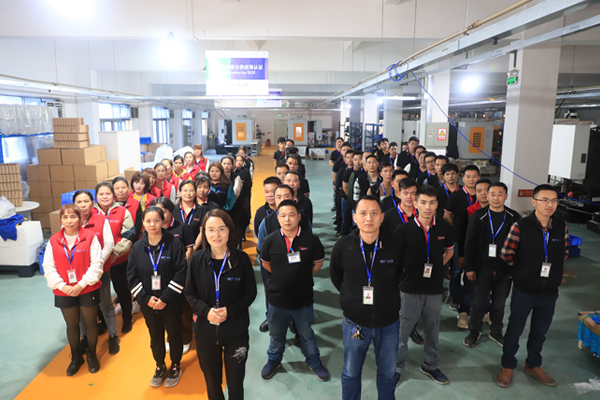15 years one-stop China custom CNC machining parts factory

Hey there I’m VMT Sam!
With 25 years of CNC machining experience we are committed to helping clients overcome 10000 complex part-processing challenges all to contribute to a better life through intelligent manufacturing. Contact us now
 122 |
Published by VMT at Mar 29 2024
122 |
Published by VMT at Mar 29 2024
In the field of CNC machining part manufacturing, the stability of precision CNC machined parts has always been a focal point for enterprises and customers alike. The quality of these parts not only affects product performance and lifespan but also serves as a crucial indicator of a company's competitiveness. In this process, the depth of integration between machinists and programmers plays a vital role in achieving high-quality and stable CNC machining. This article will analyze the correlation between the depth of integration between machinists and programmers and the stability of precision CNC machined parts from a professional perspective.

I. Roles and Responsibilities of Machinists and Programmers
In CNC machining processes, machinists and programmers are two core roles. Machinists are primarily responsible for machine adjustments, tool changes, workpiece fixturing, and other practical operations to ensure that the machine operates according to the programmed instructions. On the other hand, programmers are tasked with writing CNC machining programs based on part drawings and machining requirements to control the machine's movement trajectories and processing parameters. The close collaboration between these two roles is essential for achieving efficient and precise machining.
II. Impact of Integration Depth on Machining Accuracy
The depth of integration between machinists and programmers directly influences machining accuracy. Programmers need to fully understand the machine's performance characteristics, principles of tool selection, and material properties of the workpiece to develop programs that meet the actual machining requirements. Meanwhile, machinists must accurately comprehend and execute the intentions of the programmers during the practical operation to ensure precise machining according to the programmed instructions. Therefore, in-depth communication and integration between the two parties are essential prerequisites for ensuring machining accuracy.
III. Impact of Integration Depth on Machining Efficiency
In addition to machining accuracy, integration depth also affects machining efficiency. During CNC machining processes, machinists and programmers need to engage in thorough communication regarding machining sequences, cutting parameters, tool paths, etc., to optimize the machining process and improve efficiency. Through deep integration, both parties can jointly identify and address issues encountered during the machining process, thereby reducing trial and error and enhancing production efficiency.
IV. Ensuring Quality Stability through Integration Depth
Quality stability is a core requirement in the manufacturing of precision CNC machined parts. Deep integration between machinists and programmers helps achieve continuous quality stability. Through ongoing communication and collaboration, both parties can analyze the reasons for quality fluctuations during the machining process and take corresponding measures for improvement. For example, adjusting cutting parameters, optimizing tool paths, and improving workpiece fixturing methods can effectively enhance quality stability.

V. Strategies and Approaches to Enhance Integration Depth
To enhance the integration depth between machinists and programmers, the following strategies and approaches can be adopted:
Strengthen Training and Learning: Organize regular training and learning activities to enhance the professional competence and skill levels of machinists and programmers. This enables them to better understand and execute each other's intentions, thus improving integration efficiency.
Establish Communication Mechanisms: Establish effective communication mechanisms to ensure that machinists and programmers can communicate and exchange information regarding issues encountered during the machining process in a timely manner. This can be achieved through regular meetings or by setting up online communication platforms.
Foster Team Collaboration: Strengthen team building and foster a spirit of collaboration between machinists and programmers. Through teamwork, they can jointly address issues encountered during the machining process, thereby improving machining quality and efficiency.

VI. Conclusion
In conclusion, the depth of integration between machinists and programmers significantly impacts the stability of precision CNC machined parts. By strengthening communication and collaboration between the two parties, optimizing machining processes and parameter settings, it is possible to effectively improve machining accuracy and efficiency while ensuring quality stability. Therefore, CNC machining factories should prioritize the integration between machinists and programmers, continually enhancing integration depth to meet customer demands for high-quality precision CNC machined parts.
In the future of CNC machining part manufacturing, with the continuous advancement of technology and the evolving market landscape, the integration between machinists and programmers will face more challenges and opportunities. It is imperative to continuously explore and innovate to adapt to new machining requirements and market changes, thereby driving the sustained development and progress of the CNC machining industry.
Ready To Start Your Next Project?
Get Instant Quote

Request a Free Quote
Send us a message if you have any questions or request a quote. We will get back to you ASAP!